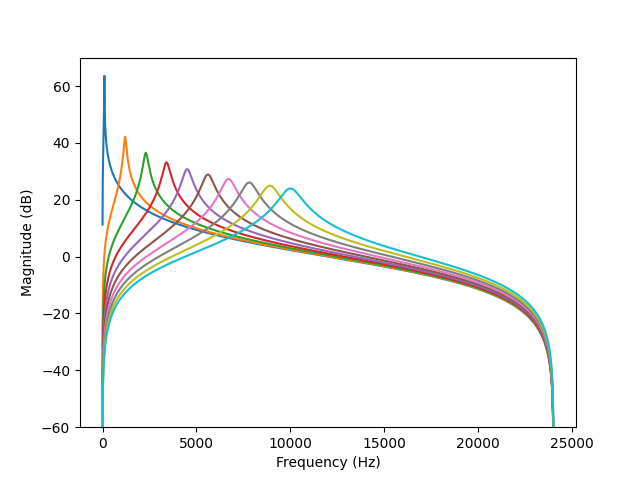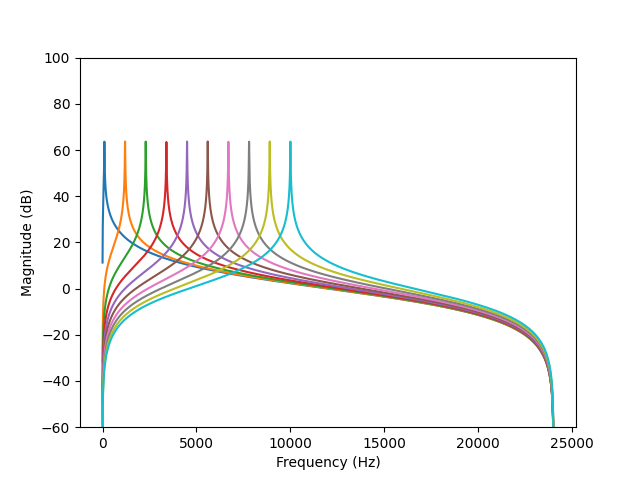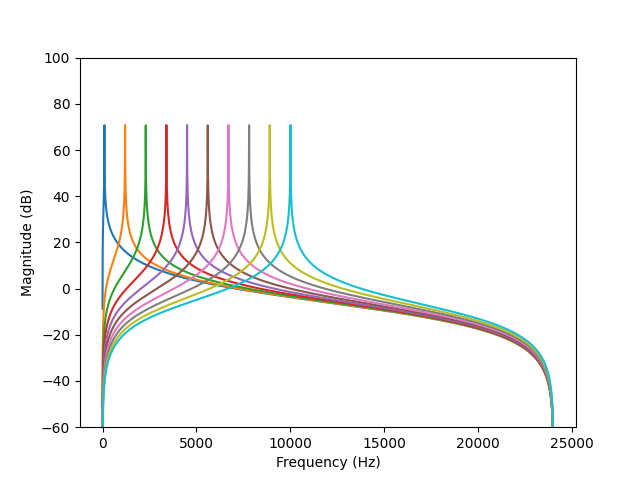OK, wow. Thanks very much for that, Nathan. I’m a little over my head with this right now, unfortunately. I’m going to have to step back quite a few steps to understand this kind of stuff. I appreciate a lot that you seem to be up for discussing these issues, and I hope to take you up on it more in the future 
Personally it looks like I have to follow two tracks, one to really understand the meaning of the math and how dsp really works, and the other just to use these things programatically with a good understanding of what’s going to happen. Thinking of the Resonz filter as a black-box function, seems to me like there’s a gap where either it must be used “by hand” or really understood on an engineering level. As someone who wants to program with it, I was expecting it to behave like a code library (and be documented like one), and found it a rather odd beast. I’m horrified and fascinated…
Ok, back to some details:
I think that where Ringz and Resonz are concerned, to compute the relationship between ringtime and bandwidth, we can use the approximate definition for bandwidth as defined in the code Resonz, and get
R = 1 - B/2 and R = e^(log001 / (decaytime * samplerate))
… so the relationship is dependent on samplerate, but if we solve for rq instead of B then it’s dependent on freq but not samplerate…
I was also trying to figure out the scaling stuff – I really wanted to have control over the output amp, not the peak gain, and it looks like the scaling factor should be sqrt(a0) rather than our a0 (for peak gain). This is both in the Stieglitz paper and csound’s version of resonz. a0 = (1 - R * R) / 2
This scaling doesn’t set amplitude to one however, they’re still too high. But it’s a good start as once it’s multiplied by sqrt(a0) rather than a0, we can just use another constant scalar rather than one that’s dependent on the parameters. The claim in the literature is that it sets the RMS to one but I don’t think I’m getting this.
sqrt(a0) experimentally results in amplitudes that are almost constant across much of the frequency range, but low frequencies with skinny bandwidths are still lower in amp – I suppose this is to be expected because there’s less time to express the frequency? I mention it because one might need to compensate for it to have low notes sound properly. And it trends very slightly upward with high frequencies. I don’t think this is because the scaling constant is wrong, just noticing details of this kind of system. Not exactly straightforward.
Anyway, my working code is now scaling the output of resonz by the (sqrt(a0) / a0) – might be good to have the sqrt(a0) factor as an option back in the ugen’s .cpp code? (as indeed csound does)







